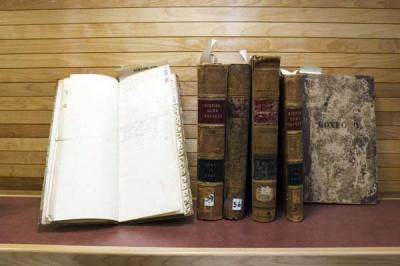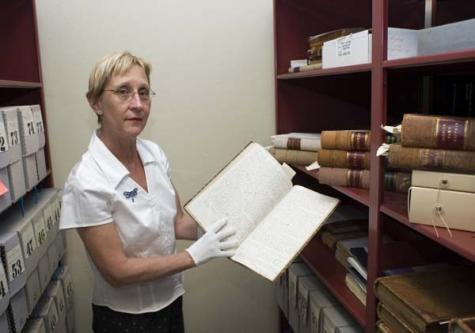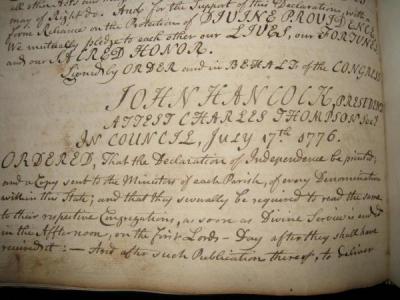Documents are Historic Resources, Too
 In 2006, the CPA statute was amended to include “documents and artifacts” within the definition of historic resources. Since that time, many communities have used CPA funds for document preservation projects, including document conservation and restoration projects and improvements to storage systems, such as installing climate controls.
In 2006, the CPA statute was amended to include “documents and artifacts” within the definition of historic resources. Since that time, many communities have used CPA funds for document preservation projects, including document conservation and restoration projects and improvements to storage systems, such as installing climate controls.
However, in the process of reviewing applications for preservation of documents, CPCs and commissions have questioned which documents should qualify as “historic” under the definition contained in the CPA legislation. Since documents are not included on the State Register, it is necessary for the local historical commission to determine historic significance of documents per Section 2 of the Community Preservation Act (MGL c.44B). So what evaluation criteria can commissions use?
Determining the Historic Significance of Documents
In discussions with document conservation professionals at the Northeast Document Conservation Center (NEDCC) and the Massachusetts Board of Library Commissioners (MBLC), the generally accepted criteria for determining the significance of buildings can be translated to documents to some extent, however, age of documents may not be as important as other factors.
As Walter Newman, [former] Director of Paper Conservation at NEDCC points out, the Society of American Archivists defines the term “historic” as “noteworthy among past events or old things” and goes on to note that the term “historic” connotes significance, whereas “historical” implies nothing more than age.
 To determine significance of documents commissions can refer generally to the National Register Criteria: Is the document associated with a significant event or person? Does it have distinctive characteristics or yield important information?
To determine significance of documents commissions can refer generally to the National Register Criteria: Is the document associated with a significant event or person? Does it have distinctive characteristics or yield important information?
It is important to remember that, per MGL c.44B Section 6, “The community preservation funds shall not replace existing operating funds, only augment them.” You’ll want to be careful that you are not using CPA funds to pay for expenditures or staff that are included in the municipality’s general budget, as you would be in violation of Section 6. Nor can you pay for a municipality’s records retention efforts, often done by the City or Town Clerk. Long before CPA, the state set standards for retention of contemporary municipal records, and those expenses are the responsibility of the general fund of a city or town.
First Ensure a Quality Storage Environment
Before a community considers funding the preservation of individual documents, it should first ensure that the quality and environment of the storage area and containers meet archival standards. Appropriate environmental controls in the records’ storage areas are generally considered the most cost-efficient preservation step that can be taken for a large quantity of records. Furthermore, it does no good to spend funds on conservation work only to return the documents to conditions which would continue the deterioration of the materials.
Additionally, for document preservation as with any type of CPA project, it is wise to determine the level of need for the project – for example, what condition are the documents in and what is their level of risk for deterioration?
 Project Example: Mendon Preserves the Declaration of Independence
Project Example: Mendon Preserves the Declaration of Independence
As reported by the Milford Daily News in March 2009, Mendon Town Meeting approved the appropriation of $80,000 of CPA funds to resolve humidity and drainage problems in the vault where records, which date to the 17th century and include a copy of the Declaration of Independence, are stored. The photograph on the left shows Mendon’s copy of the Declaration of Independence. Peter Denton of Mendon’s Community Preservation Committee explains that he was glad to support the project because there was a clear need to remove the mold and stop the deterioration of the pages. “If they continue to get moldy they will be unreadable,” said Mr. Denton.
This article is an updated and edited version of the original, written in 2009 by Jennifer M. Goldson, AICP, is a freelance planner who focuses on helping communities implement the Community Preservation Act
Jan. 2018

